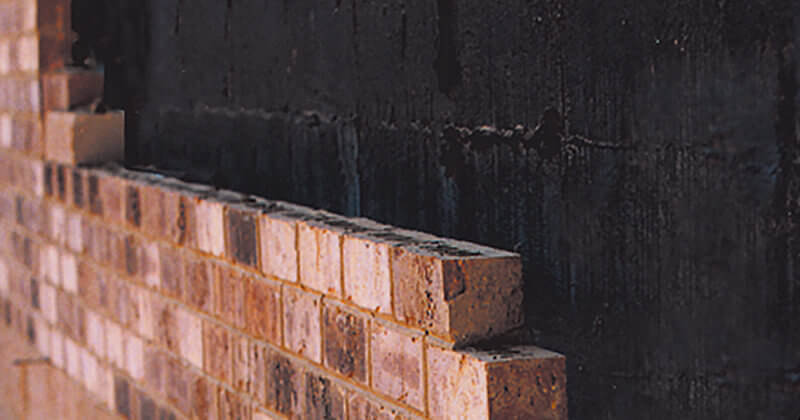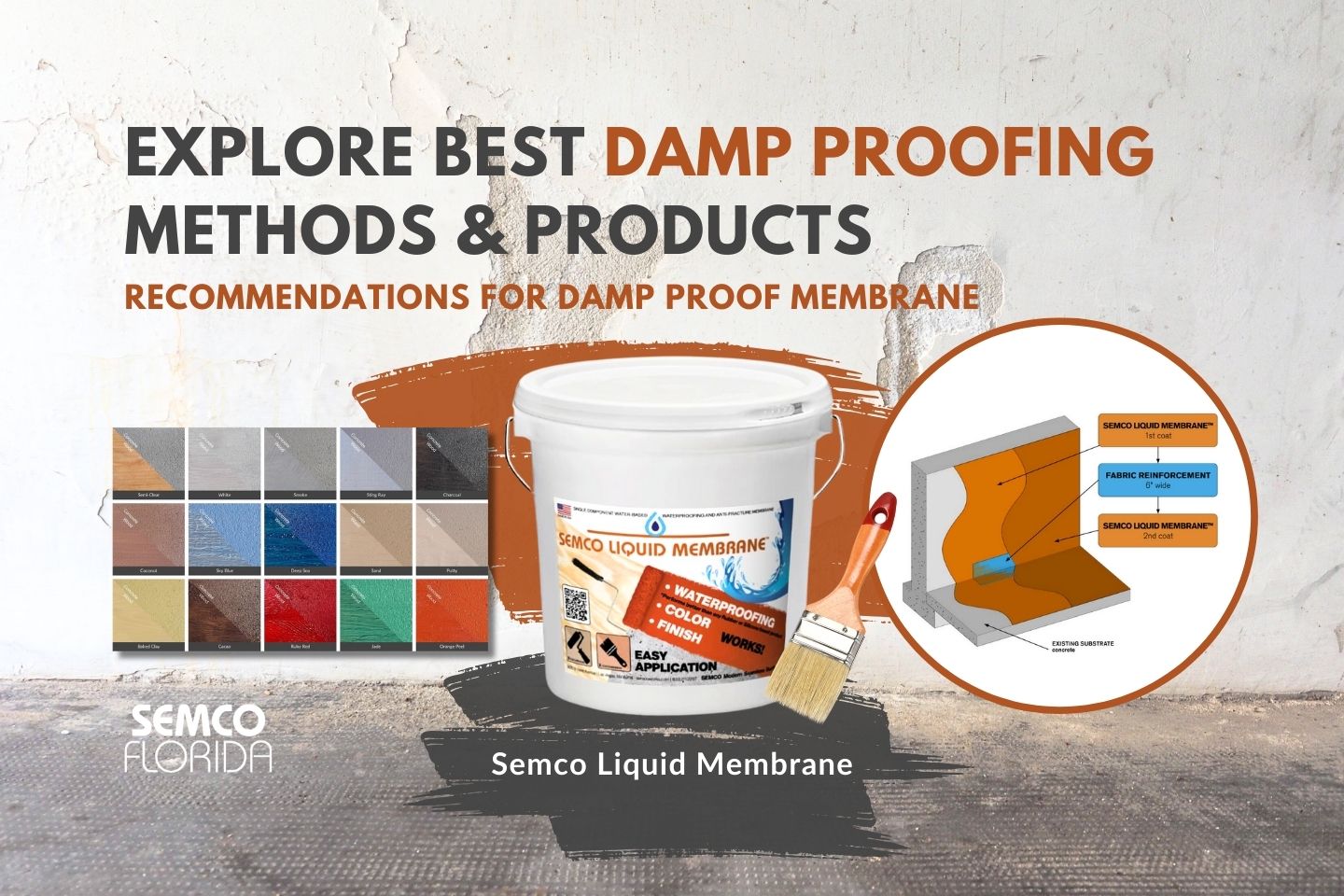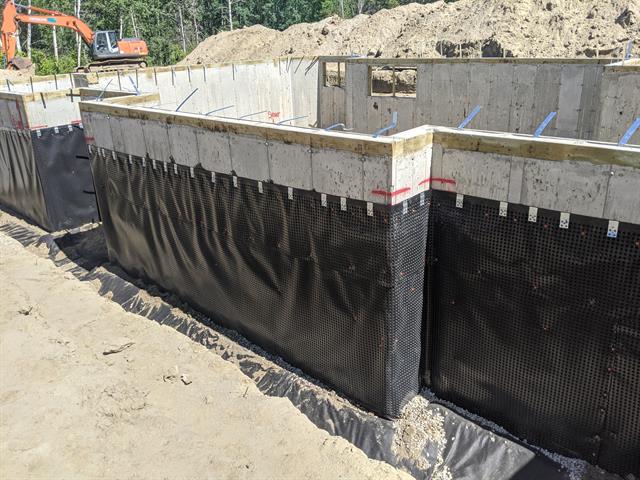Discovering the Numerous Techniques and Solutions for Effective Damp Proofing
Moisture in structures postures significant challenges to both architectural honesty and interior air quality. Various methods and options have actually arised to battle this prevalent problem. From standard damp-proof membrane layers to ingenious chemical treatments, each method offers unique benefits. Comprehending these alternatives is important for effective moisture control. Choosing the ideal solution depends on specific building conditions and needs, prompting further expedition right into the most efficient damp proofing approaches offered.
Understanding the Root Causes Of Wetness
Although dampness can occur from different resources, recognizing these reasons is important for effective remediation. Typically, dampness stems from three primary resources: increasing damp, permeating damp, and condensation. Rising wet happens when groundwater takes a trip up-wards through permeable materials, such as block or rock, usually because of an absence of a reliable barrier (damp proofing newcastle). Passing through damp is typically caused by external variables, including roof leakages, defective seamless gutters, or damaged wall surfaces, allowing water to infiltrate a residential property. Condensation, on the other hand, results from excess moisture in the air, frequently aggravated by poor ventilation and temperature distinctions, bring about water droplets developing on surface areas. Recognizing these underlying issues is necessary, as each sort of dampness needs a tailored technique for removal. Proper evaluation aids in identifying the most efficient remedies, eventually safeguarding the architectural honesty of a structure and boosting interior air high quality
Typical Damp-Proof Membrane Layers

Chemical Damp-Proofing Solutions
Chemical damp-proofing services supply an innovative technique to avoid dampness intrusion in structures. These approaches usually involve the application of liquid chemicals that penetrate stonework and create a barrier against increasing wet. Generally used chemicals include silanes, siloxanes, and other water-repellent representatives that react with surface materials to create a hydrophobic layer.The application procedure generally calls for boring openings right into the wall surfaces, injecting the chemical remedy, and allowing it to cure. This method is specifically helpful for older frameworks where conventional damp-proof membrane layers might be not practical. Furthermore, chemical damp-proofing can be much less disruptive and more economical than comprehensive improvement projects.While efficient, these solutions depend on correct application and ecological conditions for peak efficiency. Regular maintenance and surveillance are necessary to guarantee the durability of the damp-proofing therapy. Generally, chemical damp-proofing stands for a versatile alternative for safeguarding buildings versus moisture-related damages
Cavity Wall Surface Building Strategies
Cavity wall building and construction techniques use countless advantages, especially in dampness control and power efficiency. By including an air void in between two layers of stonework, these wall surfaces effectively reduce water access while enhancing insulation. This mix not just shields frameworks from dampness but likewise adds to minimized power intake.
Benefits of Cavity Walls
When taking into consideration reliable wet proofing methods, the advantages of cavity walls stand apart prominently. Tooth cavity walls consist of two separate layers, producing an air gap that properly decreases dampness infiltration. This layout decreases the threat of wetness, as the external wall surface functions as an obstacle versus rain and water ingress. Furthermore, cavity walls enhance thermal insulation, which adds to power effectiveness by minimizing warm loss. They likewise supply audio insulation, assisting to create a quieter indoor setting. The air gap enables for air flow, which helps in moisture control and minimizes the probability of mold development. These benefits not just improve the total convenience of a building yet additionally add to its durability and architectural stability.
Dampness Control Methods
Reliable dampness control strategies are crucial in tooth cavity wall surface building and construction to guarantee lasting protection against dampness. One key technique entails the consolidation of weep openings, which facilitate water drain from the tooth cavity, preventing build-up. In addition, the use of breathable membranes can aid take care of moisture levels while permitting trapped vapor to leave. Correct positioning of insulation is also vital, as it needs to not obstruct drainage paths. Ensuring that the outer leaves of the tooth cavity wall are built with waterproof materials enhances general longevity. Regular upkeep checks are necessary to determine any type of clogs or damages early, guarding the framework's honesty. Ultimately, a mix of these strategies forms a robust protection versus wetness invasion in tooth cavity walls.
Insulation and Energy Efficiency
Insulation plays a vital role in boosting power performance within dental caries wall surface building. By incorporating insulating products, these walls produce a thermal barrier that lessens warm loss and decreases energy intake. Efficient insulation not only helps keep a steady indoor temperature however also mitigates the threat of wetness, as it stops condensation within the wall cavity. Various strategies, such as making use of stiff foam boards or mineral wool, can be employed to achieve excellent insulation efficiency. Furthermore, proper installment is crucial to ensure that spaces and voids are lessened, which can otherwise endanger energy efficiency. Ultimately, a well-insulated cavity wall contributes considerably to total sustainability and lowers home heating and air conditioning expenses for home owners.
Outside Damp Proofing Approaches
External wet proofing methods are vital for safeguarding frameworks from dampness infiltration. 2 efficient techniques include the application of water resistant membrane layers and the installment of French drains. These remedies assist alleviate water accumulation and maintain the integrity of buildings.
Waterproof Membrane Layer Application
While numerous techniques exist for avoiding wetness access, the application of waterproof membrane layers remains an extremely reliable external moist proofing strategy. These membranes are commonly made from materials such as polyethylene, rubber, or customized asphalt, providing a robust obstacle versus water infiltration. The installment process includes applying the membrane layer to the outside surface areas of structures or wall surfaces, making certain total coverage to avoid leaks. Appropriate attachment and securing at joints are critical to optimizing performance. Water-proof membrane layers can be used in various forms, consisting of fluid coatings and sheet membranes, enabling adaptability based upon the details needs of the framework. This approach not just secures buildings from moisture but also boosts their long life and architectural stability.
French Drain Installation
One effective method for taking care of groundwater and avoiding moisture accumulation around a building's structure is the installment of a French drainpipe. This drainage system includes a trench full of gravel and a perforated pipeline that reroutes surface area water away from the foundation. Correct installment needs cautious preparation, making sure that the drain slopes far from the framework to help with optimal water flow. Additionally, the area of the drainpipe is important; it needs to be placed in locations prone to merging or excess dampness. Regular maintenance, including clearing debris from the crushed rock and guaranteeing the pipe remains unhampered, is crucial for long-term performance. Eventually, a well-installed French drainpipe can substantially decrease the threat of water-related issues in structures and basements.
Inside Waterproofing Strategies
Inside waterproofing strategies are crucial for protecting a building's inside from moisture infiltration and prospective water damage. These approaches typically entail the application of specialized products and strategies developed to produce a dampness barrier within the framework. One common method is using waterproof finishings or sealers on wall surfaces and floors, which protect against wetness from passing through surfaces.Additionally, installing interior drain systems, such as sump pumps, can properly take care of water accumulation in basements and crawl areas. One more technique entails using vapor barriers, which are set up to inhibit dampness motion from the ground right into living spaces.Moreover, dealing with any type of splits or gaps in wall surfaces or foundations with ideal sealants ensures a thorough defense against water intrusion. By carrying out these indoor waterproofing methods, homeowner can considerably lower the threat of mold and mildew development, structural damage, and other moisture-related issues. Proper implementation of these methods is crucial for lasting defense and structure stability.
Regular Maintenance and Inspection Practices
Normal upkeep and assessment techniques are crucial for assuring the lasting performance of moist proofing options in any type of building. Routine checks enable homeowner to determine very early indications of wetness invasion, such as peeling paint, mold development, and stuffy smells. These signs can signal underlying issues that call for immediate attention.Inspections ought to be carried out at least annually, concentrating on prone areas like basements, crawl rooms, and outside walls. Throughout these analyses, building owners need to take a look at sealants, drainage systems, and air flow to verify they operate correctly.Additionally, maintaining seamless gutters and downspouts is essential, as blocked systems can lead here to water buildup near the foundation. Implementing a normal upkeep schedule, along with prompt fixings, can considerably extend the lifespan of wet proofing actions and safeguard the structural honesty of the structure. Positive procedures eventually add to the general wellness and safety and security of the living atmosphere.
Frequently Asked Inquiries
Just How Lengthy Does Damp Proofing Normally Last?
The duration of damp proofing efficiency differs, typically lasting between 20 to half a century. Variables such as application quality, environmental conditions, and upkeep techniques considerably affect the longevity of the moist proofing therapy.

Can I Damp Evidence My Home Myself?
The private contemplated the expediency of do it yourself damp proofing. With correct study and the best materials, it is feasible. They additionally recognized the value of specialist assistance to ensure long-lasting efficiency and stop future concerns.
What Are the Indications of Inefficient Damp Proofing?
Indicators of inefficient moist proofing consist of relentless musty odors, noticeable mold growth, peeling paint, moist spots on wall surfaces, and timber degeneration - damp removal newcastle. Property owners must resolve these concerns quickly to avoid more damages and wellness concerns
Does Damp Proofing Affect Indoor Air Quality?

Just How Much Does Professional Damp Proofing Expense?
Specialist damp proofing prices vary considerably, commonly varying from $1,000 to $5,000 depending upon the building's dimension, the extent of the moist issue, and picked techniques. Each scenario needs a customized evaluation for accurate prices. Commonly, wetness originates from 3 key sources: climbing moist, penetrating moist, and condensation. When considering efficient wet proofing techniques, the benefits of cavity wall surfaces stand out prominently. Outside wet proofing techniques are crucial for safeguarding structures from dampness infiltration. While different approaches exist for avoiding dampness ingress, the application of water resistant membrane layers remains an extremely reliable external damp proofing method. Signs of ineffective moist proofing consist of consistent mildewy smells, noticeable mold and mildew development, peeling off paint, moist patches on wall surfaces, and wood degeneration.